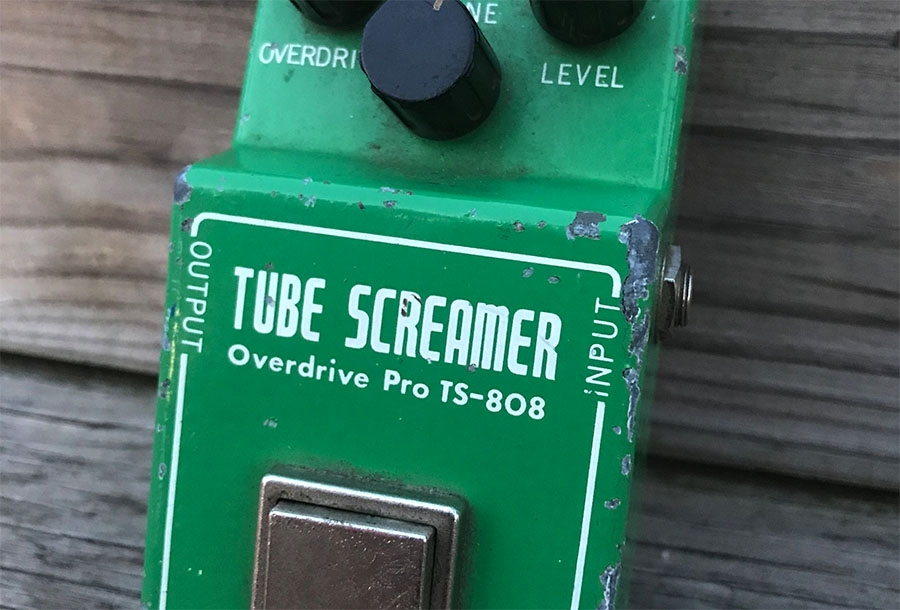
What is it about classic or vintage gear that just oozes mojo? In general, many of the circuits aren’t made of magic unicorn dust or rainbow farts and hen’s teeth; just electronics soldered together that culminate in a particular circuit. These parts aren’t necessarily designed to be used with music-related devices, but over the years that’s what’s been adopted by the industry and progressed even further into modern technology. So, what is “mojo,” and why does it play such a huge part in our gear selections? It dawned on me the other day as I was taking stock of my gear, looking at what I would be willing to move (for space and to have a bit of extra spending cash), and things that I immediately will not sell in any way, shape, or form. I think it comes down to mojo, which is a combination of several factors. It made me start looking at WHY I’m keeping the gear I’m keeping, and so easily “thinning the herd” so to speak on some other things.
Several of my friends and I were discussing vintage gear in a group chat, and lust for various pieces of classic gear that are essentially unreachable in our lifetime (financially). The more I thought about the cost. However, I started questioning why I would want something so freaking expensive? One part is nostalgia and kind of a hive-mind of what we grew up around. Many of the older guys we idolized in high school always lusted after vintage instruments, and I think it keeps being handed down through the generations. Again, it goes back to reflecting gear communities and the thought processes behind them (even pre-internet days). 1958 and ’59 Les Paul’s are considered the holy grails of the Gibson world and the idea of playing or owning one seems incredible. Same with an original ’57 Strat, or a ’68 Fender Paisley, or whatever you’d like to use as the defining unobtanium, magic instrument of love and lust as your example. Many were lucky enough to be around to experience those instruments when they were new, but as time goes on fewer players are around that have owned yet alone played a true vintage instrument. But that’s the thing; many people still lust for them despite having never laid their hands on one. Why is that? Well, mojo of course!
The IDEA of holding an instrument that old would feel like holding an ancient relic from civilizations long gone. I’ll admit that I don’t know a load of vintage instruments, but I’ve heard a lot about them lately. Paul Reed Smith did a live video in the U.K. when people asked why a vintage Strat was so great, and his answer was “Because those guys knew what they were doing.” It’s apparent because the designs haven’t changed much at all in over half of a century. At the same time, I’ve also seen many people saying that many of those old instruments are inconsistent and that some are magic, but some don’t click for lack of a better way to describe it. Despite the proposed inconsistency, some are willing to pay tens of thousands of dollars to own a piece of history. I suppose it’s about collecting anything, preserving history for future generations and all that. It’s also a very cool talking point to be able to show off that cool, now-rare gear. The same goes for pedals. The Klon Centaur is probably the most famous of all of them, and despite being a relatively simple boost and overdrive, it’s an item of lust for MANY people (and a point of contention for many more).
These pieces of gear fetch massive costs in the used market, and subsequently, many companies have tried to take the tried and true formula that players lust over and create a modern, relatively affordable (comparatively) version for the current generation that captures that nostalgia and inherent mojo. Some get excessively close in recreating the feel and response and tone of the originals, some take them to new extremes and approach the old as a springboard for creating something grounded in nostalgia, but with modern amenities. It’s the reason why we (Wampler) have two variants of klones, as well as dozens and dozens of other companies as well. It’s the same reason so many places make strat and tele-style guitars. Are the tones quantifiably different? In some cases, yes, in some cases no. There are many people on the internet that would argue that other companies than Fender make a better strat, while many believe there’s nothing like the classic. Are vintage tubescreamers from the early 1980’s completely better than the ones available today? Likely not. There may be a 5% difference or so based on part tolerances and a wider variance in manufacturing, but they’re subjective… and that percentage factors in when you’re looking at substantial differences between the costs. At that point, it’s just a personal decision as to how much that sound and difference means in monetary value. Is it worth *paying* for “mojo”? That’s up to the person making the payments!
I’ve got a few pieces of gear that are purely sentimental and will be intended to be heirlooms for my kids because they are either unique and quirky, have some form of emotional connection (such as my first MIM Strat) or completely special (gifts, etc.). In the end, it comes down to the tone and how it feels to play it for each person. For me, mojo is that smile I get when I plug into a piece of gear, and it sounds great, responds great with the rest of my rig and does EXACTLY what I’m hoping it will do. It’s the feeling of nostalgia, how playing through a piece of gear makes me feel connected to an era, or a guitar hero that I’m a massive fan of. It’s not quantifiable magic, but it hits the spot for me, where it may not do anything for anyone else. That mojo is self-driven, and I’ve bonded with pedals and guitars that were considered “budget-level,” along with not falling in love with pedals and guitars that are obscenely expensive and theoretically there was no reason NOT to love it. In the end, I can’t say that for me, mojo can necessarily be bought. It’s just the right time, the right feel, the right tone, the right look that grabs my attention when I plug in.



0 Comments